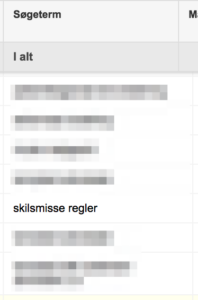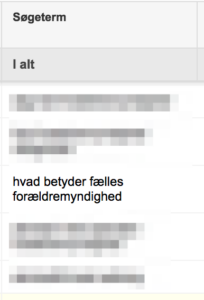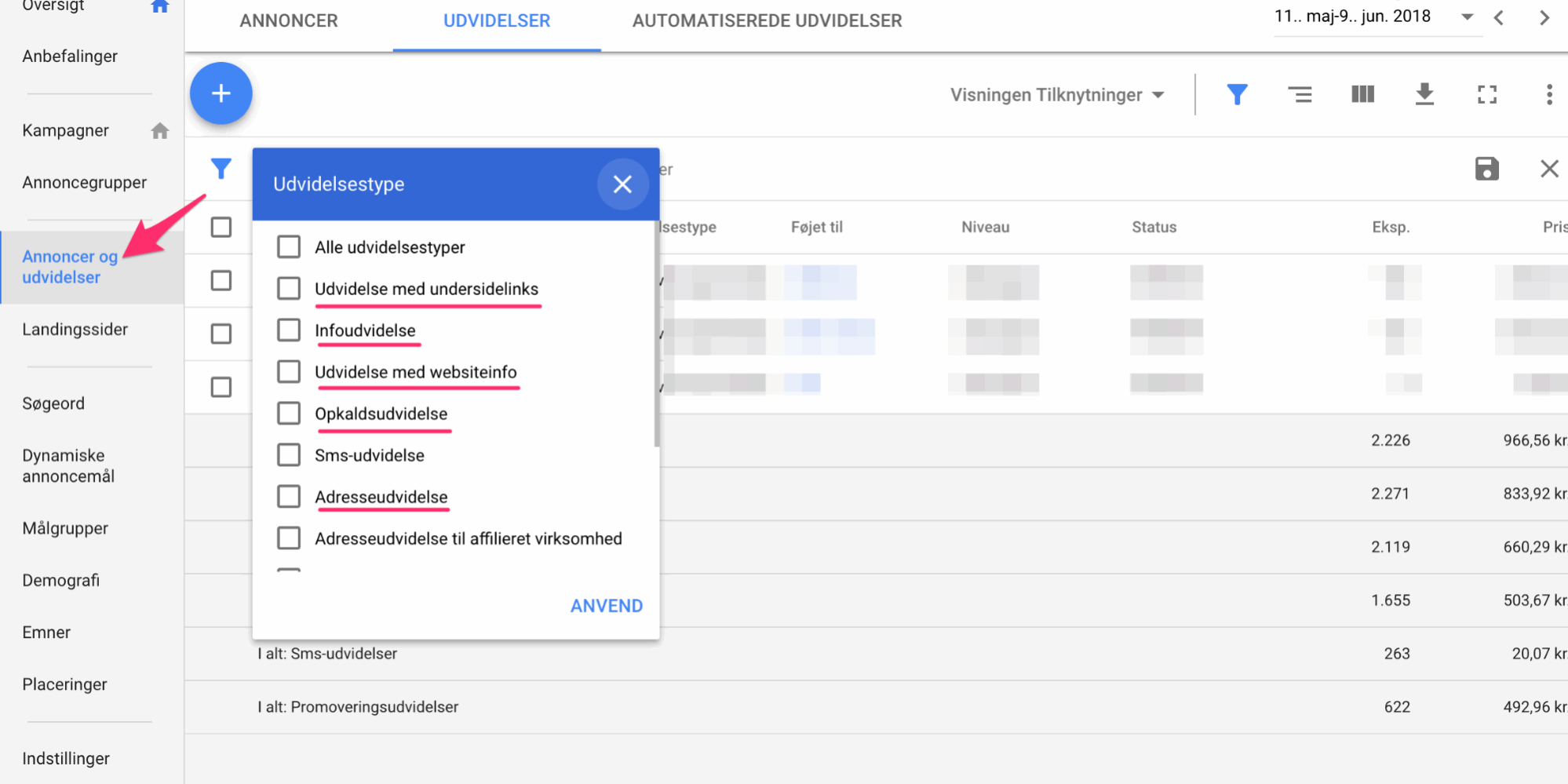My name is Patrik Lazzarotto, and I founded Lazzaweb, an avecdo Platinum consultant. In the years I’ve been involved in online marketing and Google AdWords, I consistently observe the same mistakes being made. Read this blog post and make sure you avoid these common errors to get more out of your AdWords advertising. This is also highly relevant for Google Shopping.
#1 – You Haven't Set Up Conversion Tracking
The most significant mistake that still occurs for many is launching their marketing campaigns without setting up conversion tracking or sales tracking.
Can you score in football with your eyes blindfolded?
It’s certainly more challenging, and the same goes for your marketing. Set up tracking to evaluate the effectiveness of your campaigns. Besides enabling you to measure your return on investment, it’s also crucial information for optimizing your account.
For example, without data, you can’t determine how your keywords are performing, and decisions or optimizations on the account become impossible.
Stop relying on gut feelings and get tracking set up if you haven’t done so already.
Money in a Black Hole
I recently reviewed an AdWords account where conversion tracking was not set up.
Client: “I don’t think we’re getting enough out of our AdWords.”
Already at the word “think,” I knew something was seriously wrong. When you run online marketing, you should have 100% insight, especially as a webshop owner. You can set up tracking to show your revenue figures, allowing you to analyze and evaluate based on ROAS and ROI figures. If you’re unfamiliar with the terms ROAS and ROI, I’ve provided explanations at the bottom of the blog post.
The client had spent 150,000 DKK over the past year without conversion tracking set up.
Due to the absence of conversion tracking, I cannot assess whether it has been a success or not; one can only guess that it was not. If conversion tracking were set up, one could see precisely how many inquiries the company had received through AdWords. Additionally, it would be impossible for me to evaluate which keywords had generated value for the company.
Since most of the budget was spent on “what is” searches, i.e., informational searches – it wasn’t ideal. These could be keywords like “what is a deed,” which leans more towards informational searches rather than a keyword like “Legal help with a deed.”
I’ll delve further into this in the next point (#2) on how to check which search terms you appear on.
Here's Where You Can Set Up Conversion Tracking

You set up your conversion tracking here (a script that needs to be inserted on your website).

#2 – You're Not Optimizing the List for Negative Keywords
What are you actually spending money on?
You can find out by accessing your search terms report, located here:

Search terms display a list of the searches that have generated clicks on your ad.
It’s crucial to regularly review your search terms and ensure that the traffic you’re paying for is relevant and qualified for your product.
A common mistake that many make is either adding search terms that are too broad themselves or letting the AdWords system capture searches and phrases that are too broad compared to the keywords you’ve added.
As an advertiser, it’s essential to make the keywords as specific as possible to capture the consumer when they are further along in the purchasing process. Therefore, we’re also interested in removing search terms that are less relevant, such as informational searches where users are just looking for information and not interested in purchasing your product.
Two examples of non-relevant search terms:


[Images showing examples of non-relevant search terms in AdWords]
These images illustrate two examples of searches that are most likely not ready to contact a lawyer but are simply looking for information.
A good practice is to add negative keywords like “free” and similar terms since there’s no reason to spend money on people looking for something that is free.
If you sell new products online, it’s also beneficial to add words like “used” to prevent wasting money on people looking to buy used items.
Here is the translated list:
– free
– free
– used
– used
– dba (Den Blå Avis – a Danish classified ads website)
– The Blue Newspaper
– yellowandfree (another Danish classified ads website)
– youtube
– video
– film
– guide
– guidance
– Info
– documentary
– documentary
– guides
– how to
– Information
– Wiki
– wikipedia
– salary
– facts
– faq
– facts
– job
– jobs
– position
– positions
– review
– reviews
– Trustpilot (a Danish consumer review website)
– Reviews
– review
– proff
– Cvr (Central Business Register – a Danish government register)
– Accounts
– earn
– server
– rule
– rules
– legislation
– law
– can one
– may one
– how
– punishment
– punishable
– low
– make
– do it yourself
#3 – You Have Only 1 Ad
Google’s own “best practices” recommend setting up a minimum of 3 ads per ad group. This can be advantageous as it may increase your impression rate. Simultaneously, it provides an excellent opportunity to initiate a split test, either manually or by allowing the AdWords system to display the best-performing ads for you.
When you create multiple ads per ad group, the ads rotate in and out, giving you valuable insights into which ones receive the most clicks and conversions.
It’s beneficial to craft unique headlines for each ad, allowing you to test which messages resonate best with your audience.
#4 – You Haven't Linked Your AdWords Account with Analytics
It’s a good idea to link your AdWords account with your Analytics account. This provides you with accurate data displayed in your Analytics panel regarding AdWords traffic.
By linking Google Analytics with your Google AdWords account, you share data both ways, bringing your AdWords data into your Analytics account.
This way, you also avoid AdWords traffic being mistakenly identified as organic traffic.
Here’s where you can link your AdWords account to your Analytics account:

Another significant advantage of why you should do this is the ability to create audiences. In the context of Google AdWords, audiences aren’t precisely what is commonly understood by the term. Audiences allow you to be even more specific in your ads. For example, you can show your display ads only to people who have previously visited your shopping cart on your website or increase your bids on the search network for past visitors.
You can set up audiences for visitors in the last 30 days and for those who have visited your cart actively, which you can actively use in your AdWords marketing.
This not only enables you to bid higher for your target audiences in your search campaigns but also provides you with the opportunity to use it in remarketing campaigns.
Ideas for audiences that can be set up:
– All Visitors
– New Visitors
– Past Purchasers
– Added to cart but didn’t convert
540 days
180 days
90 days
30 days
14 days
7 days
Here’s how you set up audiences:

#5 – You're Not Using Ad Extensions
Ad extensions are crucial as they not only boost your quality score but also allow you to occupy more space in search results.
Google claims that you can get up to 15% more clicks by expanding your ads with ad extensions.
Examples of active ad extensions:

Here you can see where to find the option:

#6 – You Haven't Added Long-tail Keywords
Try to avoid having keywords with only 1 word as much as possible.
Most people searching on Google use phrases, and you should too.
By setting up individual ad groups for your long-tail keywords, you can incorporate more relevant search terms and achieve lower click prices, rather than risking your 1-word keywords being “captured” in phrases because you’re running phrase match or broad match modifiers.
In your search term report, you can also see which keywords were found on exact match, phrase match, and broad match.
If there is enough search traffic for the keyword, it would be advantageous for you to add those captured on broad or phrase match as an individual keyword.
Example:
You have added the keyword “Adidas shoes.” But if you are found on “Black Adidas shoes,” it would be beneficial to add the keyword “Black Adidas shoes.”
If you are not familiar with the terms exact match, phrase match, and broad match, I have provided a glossary at the bottom of this blog post.
Purchase a Review of Your Google Ads Account on Video.
You have now gained insight into a few out of the many mistakes I see most advertisers make. If you want more insight into your AdWords setup, you can have me conduct a thorough analysis of your AdWords account – in a video.
You will receive valuable feedback and comments in a video I create for you. You can always review the video and learn from it, ensuring that you get the most out of your advertising budget.
A video review is a walkthrough of your AdWords account, where I step-by-step guide you through the account and provide feedback and comments on how you can improve your results.
 Patrik Lazzarotto
Patrik Lazzarotto
Speaker for IVAEKST and expert blogger on Amino and others.
LAZZAWEB is known for being an honest and reliable agency; our clients have 100% transparency. Specialized areas include Google AdWords, Google Shopping, and SEO. Lazzaweb is, moreover, a Platinum avecdo partner – Contact LAZZAWEB today at +45 71 99 71 40 or write to contact@lazzaweb.dk.
Explanation of Terms Used in This Post:
ROAS stands for Return On Ad Spending. So, if you have a ROAS of 1,000%, it means that when you spend $1,000 on advertising, you get $10,000 in return in revenue.
ROI is an abbreviation for Return On Investment, indicating whether an investment has been positive or not. It provides an overview of your return on investment and what you have earned.
Negative keywords are keywords you do not want to appear for. Here, you tell the AdWords system that if the specified negative keyword is included in the search query, your ad should not be displayed.
Audiences – when talking about Google AdWords, it’s not quite the same as commonly understood audiences. Audiences allow you to be even more specific in your ads. For example, you can choose to show your ads only to people who have previously visited your shopping cart on your website.
Search terms vs. keywords: Your keyword is what you add to your ads, while the search term is an expression of the exact search in Google where your ad was displayed and found. For example, you may have added a keyword “Adidas shoes,” but you’re found on the search term “black Adidas shoes.”
Exact match means your ads can be shown for searches that match the exact keyword or a very close and relevant variation of your exact keyword. Relevant variations could be changes in word order and the addition or removal of words.
Phrase match means your ads can be shown for searches that match a keyword or relevant variations of that specific phrase with additional words before or after.
Broad match means your ads can be shown for searches with typos, synonyms, related searches, and other relevant variations. If you’ve selected the keyword “black Adidas shoes,” your ad could be shown for someone searching for “buy dark Adidas shoes.”






